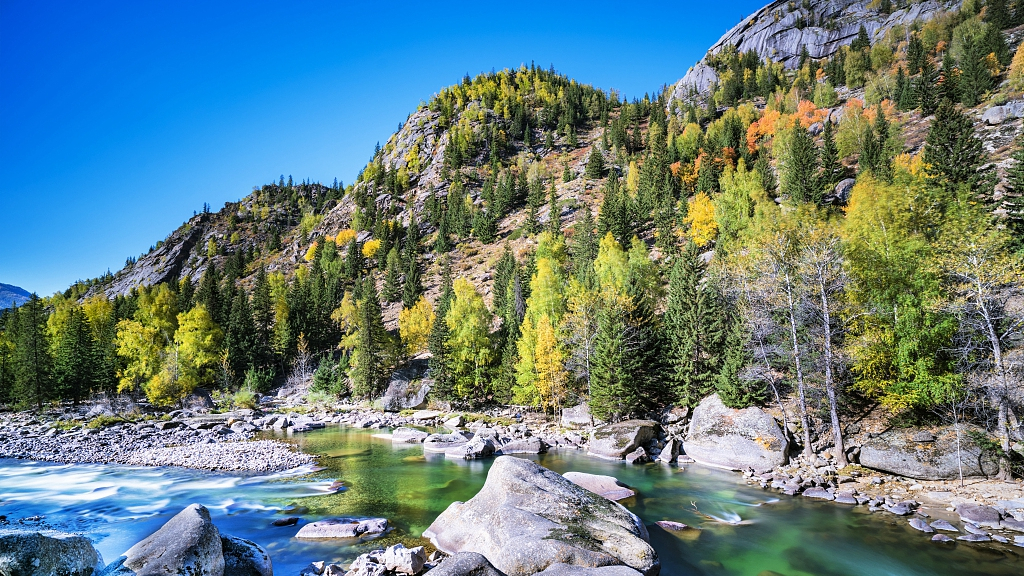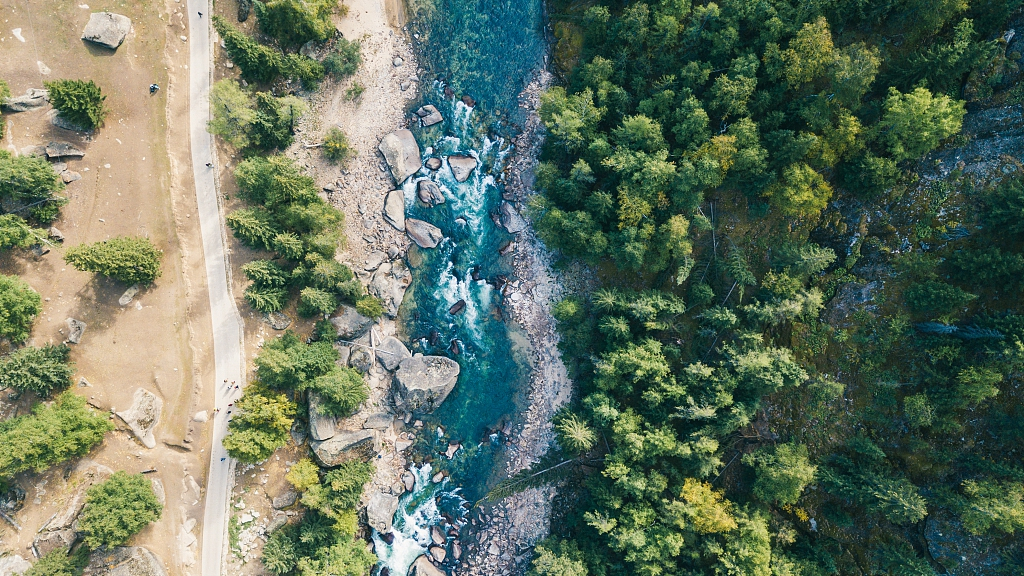

The mining site of Koktokay has become a new "must go" attraction when visiting northwest China's Xinjiang Uygur Autonomous Region.
Known as a "natural geological museum," the mining site in Koktokay Township in the county of Fuyun has more than 80 kinds of minerals, nearly half of the 170-plus types known in China. The mining site also has one of the largest pits in the world, which is more than 200 meters deep.
The minerals and rare metals produced at the mining site played a crucial role in the development of the country's aerospace sector, national defense, and other industries.

The mining site of Koktokay in northwest China's Xinjiang Uygur Autonomous Region. /VCG Photo
However, as the mineral resources at the mine became depleted by the end of the 1990s, the mine had to overcome the predicament of shrinking profit and increasing pollution.
Developing tourism based on the mine then became an option. The local government invested over 3.7 billion yuan (540 million U.S. dollars) in restoring vegetation, building roads and other projects involving environmental improvement.
The government also shut down an electrolytic aluminum plant and others with high pollution and built cultural parks where the plants were to attract cultural and tourism companies.
The efforts proved to be a success. About 1.6 million tourists visited Fuyun County in 2015, and half of them visited Koktokay.

An aerial view of Koktokay in northwest China's Xinjiang Uygur Autonomous Region. /VCG Photo
Tourists can experience a maze-like world full of various minerals such as quartz and mica in an 800-meter-long mine cave, where the temperature is zero degree Celsius all year long.
The booming tourism industry in Koktokay helped increase the annual per capita income of the residents in the township to about 15,000 yuan (2,181.22 U.S. dollars).
"Seeing the beautiful environment in the mining site, I am as proud of working here as my father was," said Tan Shengli, manager of the scenic spot of Koktokay national mine park, whose father was a miner.
In recent years, Xinjiang has been pushing forward the high-quality development of its tourism industry. In 2018, the number of tourists in the region exceeded 150 million, up more than 40 percent year on year.
(Cover: Koktokay in Fuyun, northwest China's Xinjiang Uygur Autonomous Region. /VCG Photo)

Copyright © 2018 CGTN. Beijing ICP prepared NO.16065310-3
Copyright © 2018 CGTN. Beijing ICP prepared NO.16065310-3